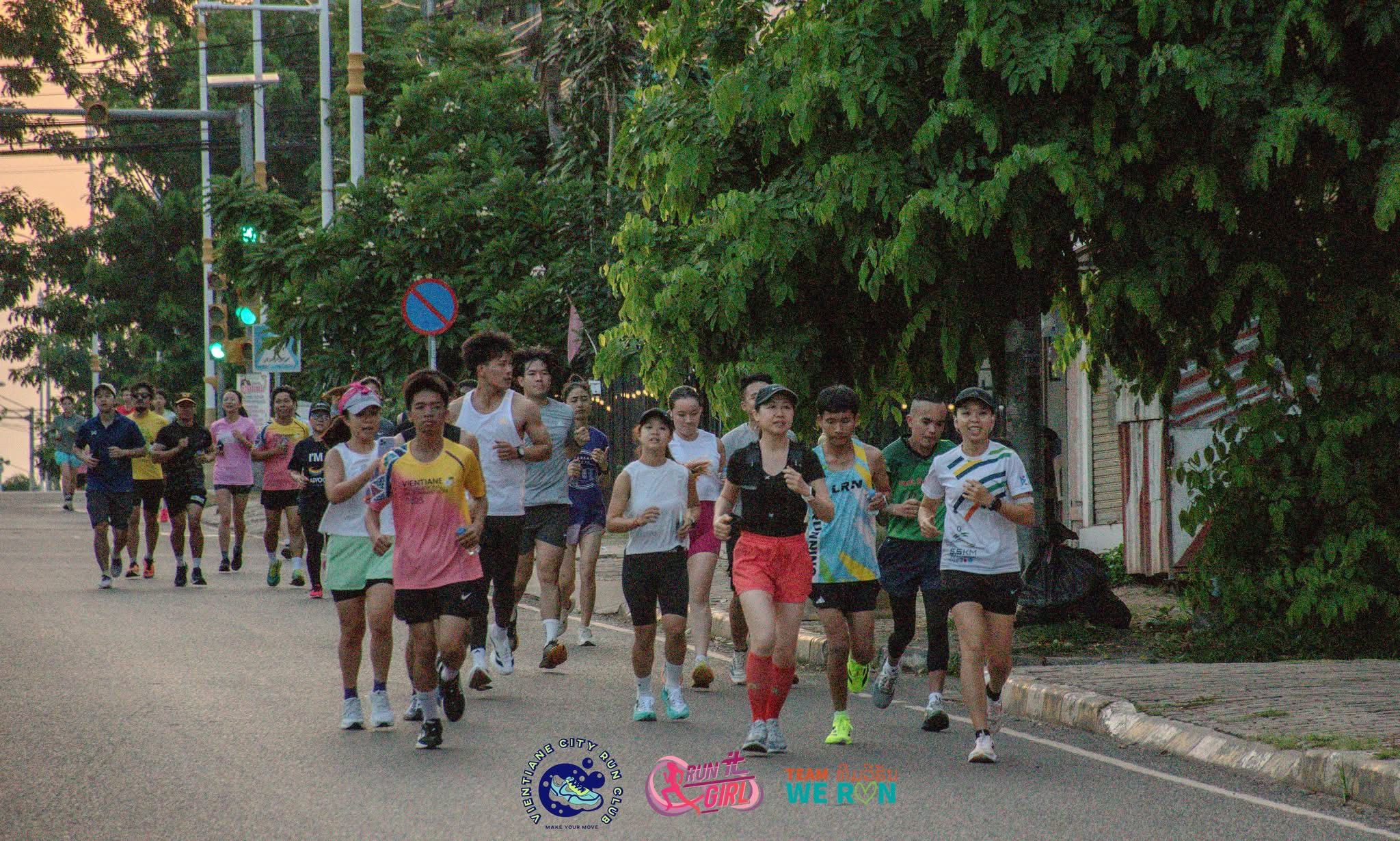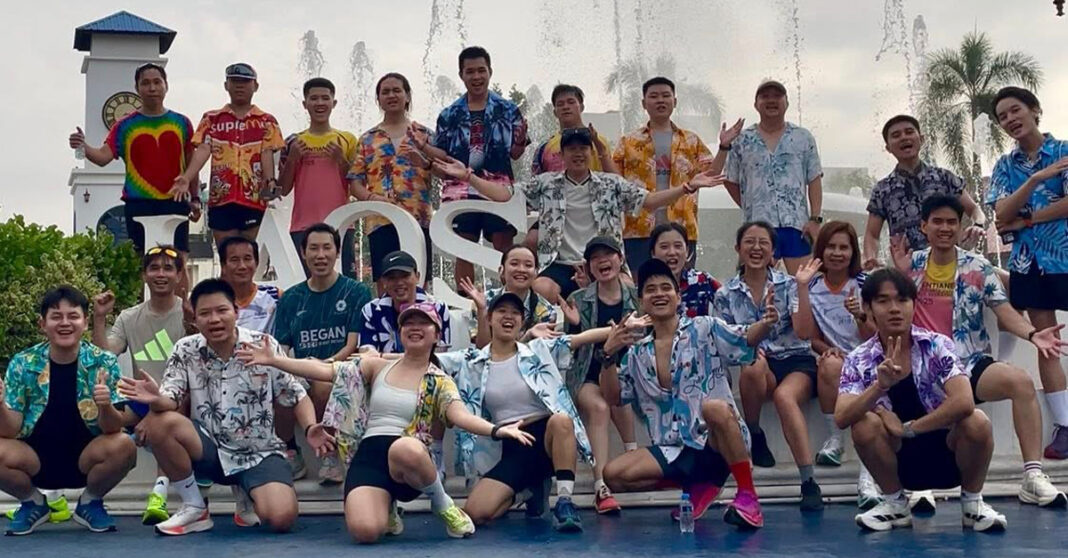In recent years, Vientiane has seen a quiet but steady rise in running culture. Once considered a niche activity, running is now gaining traction across the capital, thanks to city races, charity events, and grassroots groups that are making the sport more visible, and more social.
One of the figures inspiring this shift is Lodkeo Inthakoumman, one of Laos’ top female runners from Champasack Province in the south. She has gained recognition for her strong performances in national and regional long-distance events, helping to raise the profile of running in Laos.

Benefits Behind the Movement
Running is more than just a growing trend, it offers a wealth of physical and mental benefits. Dr. Channita Langsy, a Hematology specialist in Vientiane capital, explained why running is a powerful form of exercise.
“Running is one of the most popular activities because it strengthens the body’s endurance, especially the cardiovascular and pulmonary systems, which in turn improves sleep quality,” she said.
“Mentally, even a run of 5 to 10 kilometers triggers the release of endorphins, serotonin, and dopamine, substances that boost mood and reduce stress.”
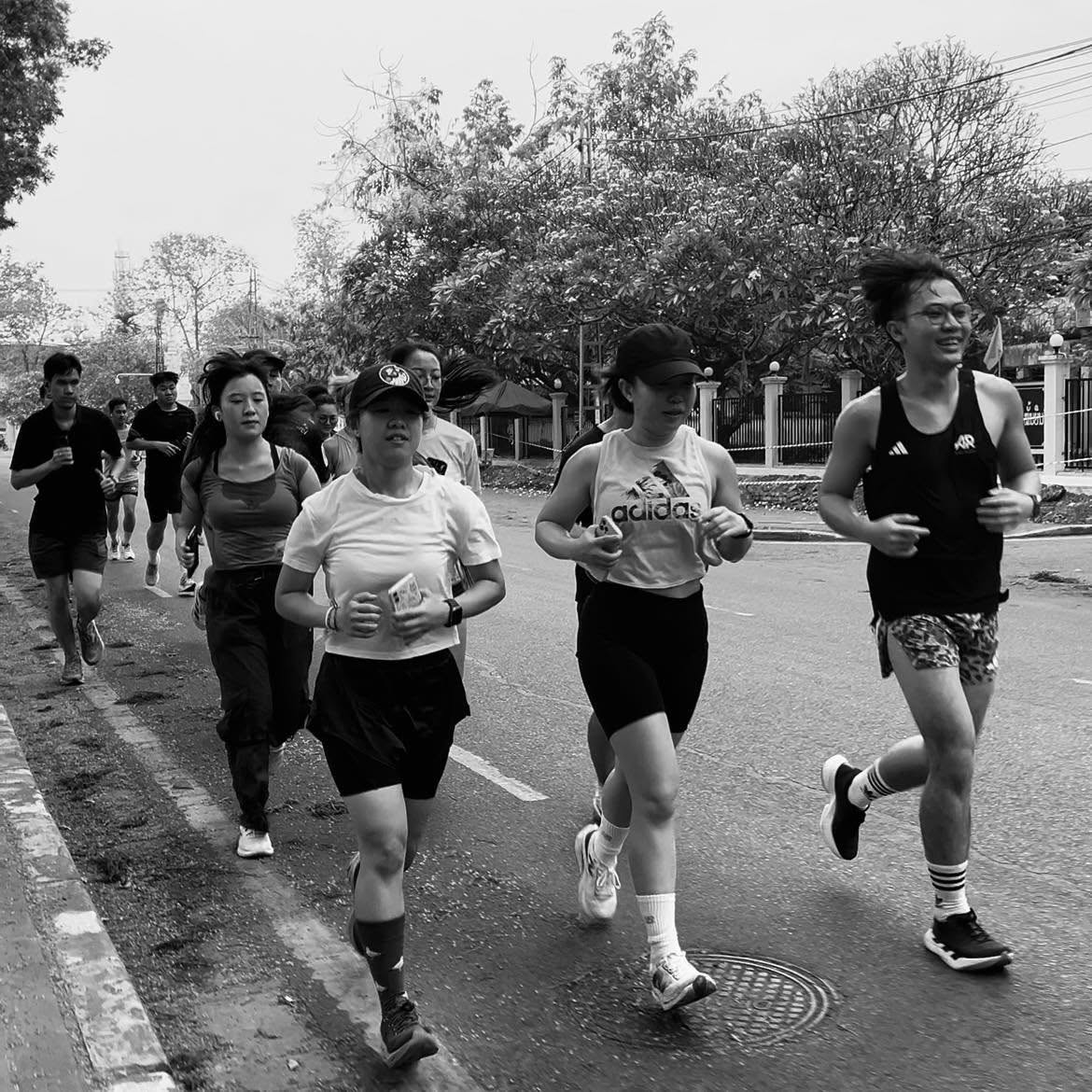
Over time, Dr. Channita added, running helps lower the risk of metabolic diseases like insulin resistance, diabetes, and high blood pressure. It also increases bone mass, helping to prevent osteoporosis and fractures.
“We’re seeing more young people join running clubs. This is a very positive development. Rather than gathering for harmful activities, they come together to run and exercise, creating a source of positive energy and community,” she noted.
Where People Run in Vientiane
While interest in running is growing, many runners in Vientiane note the city still lacks dedicated infrastructure. Joggers often share space with cyclists, walkers, and even motorbikes, especially along the riverside promenade.
Vientiane’s flat streets and mix of city and green spaces make it a good place to go for a run. In the early mornings and around sunset, joggers often head to the Mekong promenade to catch the views while getting their steps in.
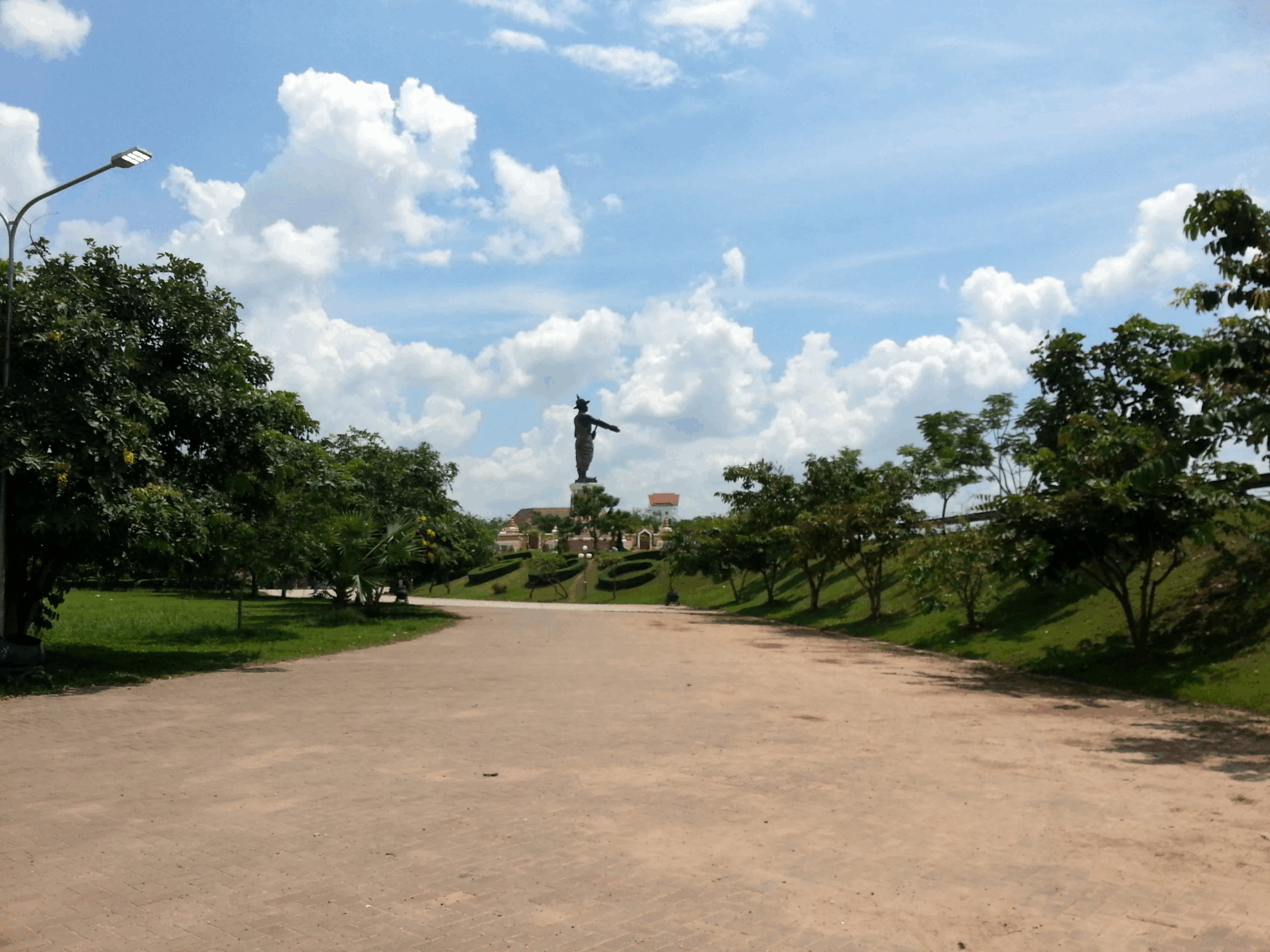
Not far from there, Chao Anouvong Park is a favorite for short loops.
The paths wind through neat gardens, with the statue of King Anouvong keeping watch nearby.
The park is well-lit and close to main roads, making it a convenient spot for people looking to run before or after work.
Thatluang Park is another go-to spot, right in the middle of the city. It draws all kinds of runners, from first-timers to regulars training for longer distances.
Some runners are also exploring quieter areas outside the usual routes.
The Thatluang Lake area, part of a slowly developing zone on the city’s edge, is becoming more popular for its peaceful trails and open space. On weekends, it’s common to see families and friends out walking or jogging together there.
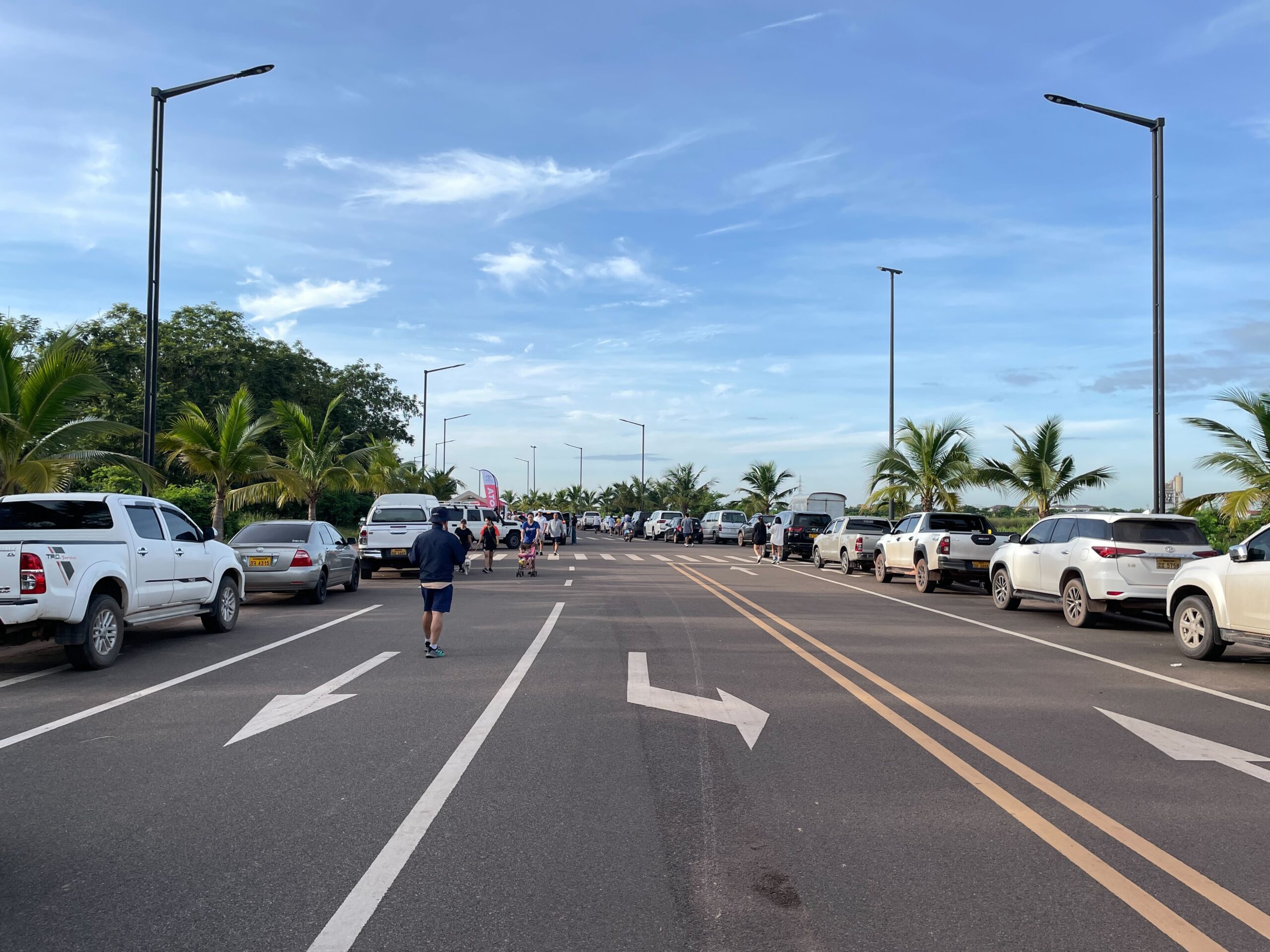
At the National University of Laos in Dongdok, Xaythany District, students and locals make use of the open campus and running track. It’s a safe and easy place to get in a few laps, especially for those training more seriously.
As for Chao Anouvong Stadium, once a key spot for city athletes, it’s currently closed for renovations but expected to reopen in the near future.
The Rise of Community-Driven Running
Beyond solo routines, running in Vientiane is evolving into a more social experience. Several groups have formed in recent years, creating new avenues for runners to meet, connect, and stay motivated.
Among them is the Vientiane City Run Club, founded in late January 2025 by three friends, Deuanphachanh Sisongkhame (Lar), Bounmy Thepkaysone (Maggie), and Oynilanh Phommachanh (Oy), who found themselves frequently running together on weekends.
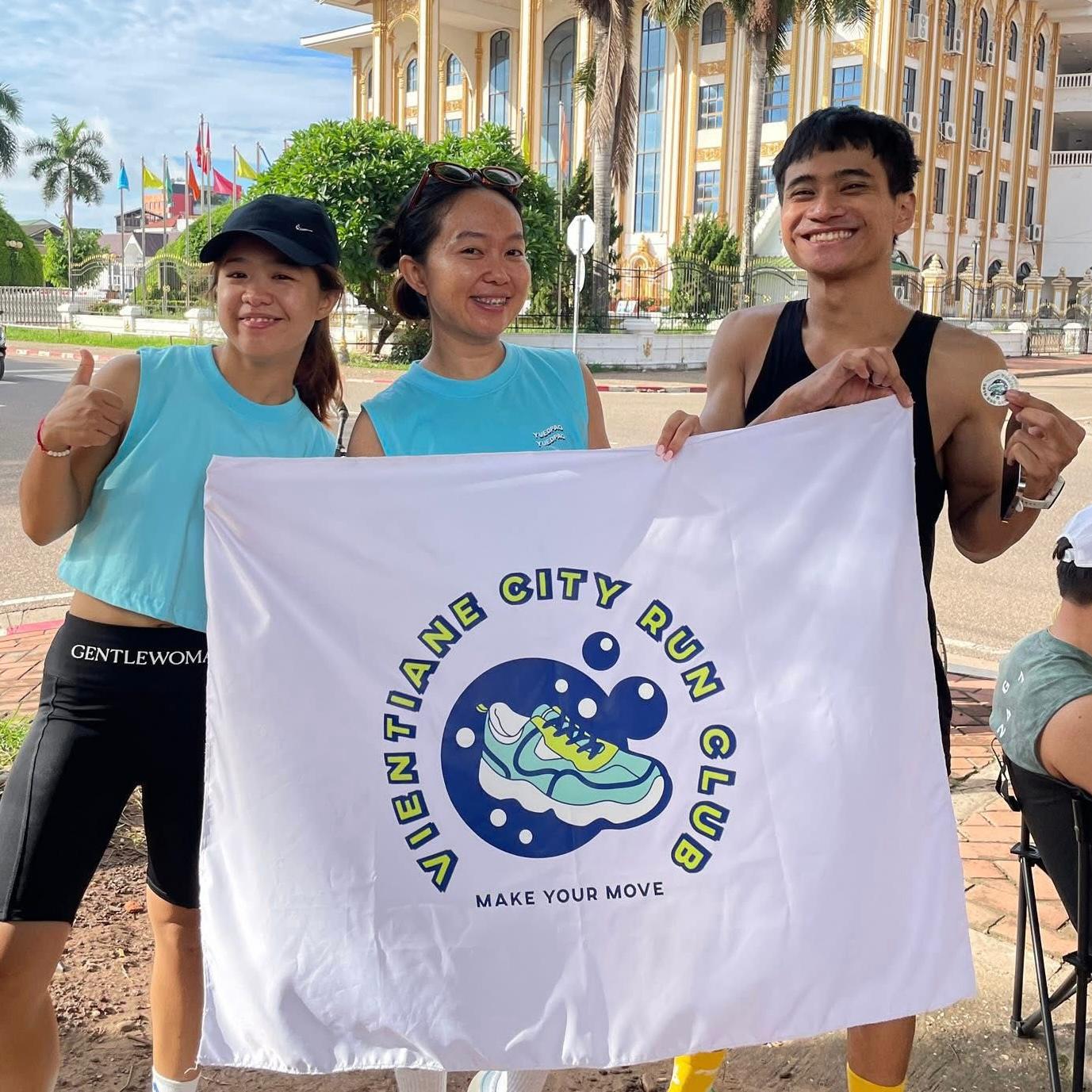
“In Laos, this kind of activity is still new,” the co-founders said. “Vientiane can feel quiet in terms of active and social gatherings, so we created a club that blends running and community, often finishing with a cup of coffee afterward.”
The club began with just six runners and now regularly attracts 10 to 20 participants each Saturday.
The founders say their goal is to “encourage people to get out of their comfort zones, start their day with movement, and talk to strangers who could become new friends.”
The aim is simple: make running more approachable, especially for beginners who may feel intimidated by gyms or competitive race culture. There’s no set distance, no stopwatch ticking. Just shared movement.
Participants of the club say the experience has changed how they engage with the city.
“We often miss the beauty of familiar places because we pass them by in cars. But running through the city makes you see them differently, it’s not tiring, it’s fun,” said Sengtavanh Keovichit, a local runner.
Other groups like Run It Girl and Team We Run have occasionally joined forces with Vientiane City Run Club, creating joint runs that have drawn over 40 participants at a time.
